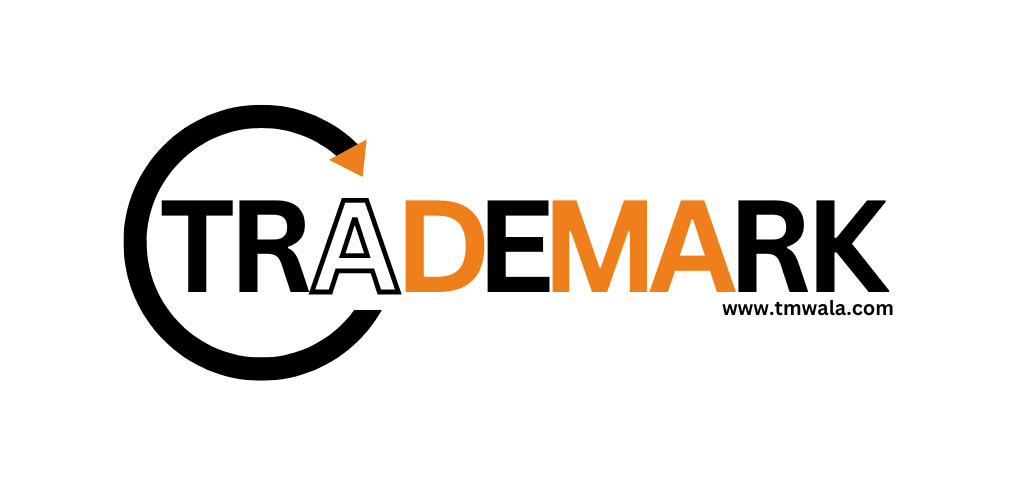INTRODUCTION
A Service Level Agreement (SLA) is a formal contract between a managed service provider and its customers, or between different departments within the same organization, that outlines the specific services to be provided and the performance metrics that the provider is obligated to meet. It defines the scope of services IT services, quality metrics, responsibilities of both parties, and the remedies or penalties in case of non-compliance. SLAs ensure clarity and accountability, setting expectations for SLA compliance and facilitating effective management of service delivery.
ESSENTIAL COMPONENTS OF SLA
1. Agreement Overview: In this first section, key information about the SLA is outlined, such as the parties involved, the start date, and an overview of the services provided by the service level agreement provider.
2. Service Description: All services provided under different circumstances must be fully described in the SLA, including turnaround timeframes and IT support services offered.
In addition to a list of the technologies and applications used, it should include information on dependence locations, operating hours, maintenance availability, procedural outlines, and methods of service delivery.
3. Exclusions: To minimize confusion and misunderstandings, specify services that are expressly excluded from coverage.
4. Service Performance: Specify the performance benchmarks and metrics that are used to evaluate the service provider’s effectiveness. The criteria used to gauge service levels should be agreed upon by both the client and the service provider.
5. Redress: Outline what happens if the service provider does not sufficiently fulfill its SLA commitments.
6. Stakeholders: Clearly outline each party’s obligations and functions under the agreement.
7. Security: Detail all security measures the service provider will implement, including IT security and nondisclosure agreements as necessary.
8. Risk Management and Disaster Recovery: Establish risk management processes and outline a disaster recovery plan that is communicated between the parties.
9. Service Tracking and Reporting: Define the structure for reporting, intervals for tracking, and identify stakeholders involved in monitoring the agreement.
10. Periodic Review and Change Processes: Outline procedures for regularly reviewing the SLA and its key performance indicators (KPIs). Define the process for making necessary changes.
11. Termination Procedure: Specify the circumstances in which any party may end the contract or let it expire. Decide on the amount of time that either side must give notice.
12. Signatures: To signify their acceptance of the terms and procedures described in the SLA, the document must be signed by all pertinent stakeholders and authorized representatives from both parties.
TYPES OF SLA
- Customer-based SLAs: It’s a type of contract that’s done with just one client and includes all the services that the client needs, i.e., tailored to specific customer needs. These kinds of agreements usually rely on a single contract, which simplifies things for the seller.
- Service-based SLAs: It’s a contract that specifies a single service for every client, i.e. Generic agreement covering standard services. For vendors, the SLA is easy to understand and straightforward because it is based on constant standards.
- Multi-level SLAs: Under this kind of agreement, the end-user can customize the terms to suit their needs; they can add several conditions to create a service that meets their demands.
Importance of SLAs
- Enhanced Client Experience: When a customer invests in a cloud service provider, they are assuming a risk and acting in good faith, hoping the supplier can fulfill their demands. These clients consider the SLA as a kind of safety net; if the provider defaults on the agreed-upon services or owes them other responsibilities, they will have legally binding evidence to support their restitution claims.
- Customer satisfaction: SLAs help improve customer satisfaction by clearly defining service expectations, thereby increasing loyalty.
- Enhanced work environment: Everyone engaged gains when responsibilities are well-defined, and metrics are transparent and measurable. This also applies to employees, who are more aware of their responsibilities and the criteria by which their work will be evaluated.
- Reputable and well-established information source: The SLA acts as a mediator, ensuring that everyone’s interests are considered. Both parties can rely on it as a source of trustworthy, legally verified information about service standards and other rules.
- Enhanced output and effectiveness: The measurements defined in service level agreements (SLAs) have benefits of their own. When expectations are clear, workers have a “north star” to guide their work. Personal accomplishment and productivity both rise because of this, ensuring the caliber of the services
- Preservation of Steady Service Levels: Using SLA data for continuous improvement
- Risk reduction: Taking care of any problems and finding solutions.
KINDS OF SERVICE MONITORING METRICS
The kinds of metrics you keep an eye on can vary depending on the service and include:
• Service availability: the duration of the service’s usability. This might be quantified by a time slot; for instance, 99.5 percent availability would be needed between the hours of 8 a.m. and 6 p.m., while availability would be specified during other hours. E-commerce businesses usually have quite stringent SLAs; a site that makes millions of dollars per hour may well need to have 99.999 percent uptime.
• Defect rates: The total number or percentage of mistakes in significant deliverables. This category may include production issues like incomplete backups and restores, coding errors/rework, and missing deadlines.
• Technical quality: Commercial analysis tools that look at things like program size and code errors are used to measure the technical quality of outsourced application development.
• Security: Vulnerabilities in application and network security can be expensive in these highly regulated times. In the event of an incident, measuring controllable security measures, like patching and anti-virus updates, is essential to demonstrating that all appropriate precautions were taken. With increasing threats, SLA performance metrics must cover essential areas like patch management and antivirus updates.
• Business outcomes: More and more IT clients are asking for business process metrics to be included in their service level agreements (SLAs). If it is possible to calculate the vendor’s contribution to those KPIs, using the current key performance indicators is usually the best course of action.
HOW MONITORING TOOLS TRACK SLA METRICS
Service Level Agreements (SLAs) are tracked by monitoring tools using a variety of
methods intended to measure and report on important metrics that specify the SLA, for example –
- Measures of Performance Monitoring: Performance indicators, including response time, uptime/downtime, throughput, and error rates, are regularly measured by monitoring systems. These measurements are contrasted with the SLA-specified goals.
- Real-Time Alerts: They send out notifications when measurements stray from predetermined goals or thresholds. For instance, if a certain limit on response time or a predetermined percentage of downtime is exceeded.
- Dashboard and Reporting: A lot of monitoring tools come with dashboards and thorough reports that compare present performance to SLA objectives. For tracking trends and compliance over time, these reports may contain historical data.
- Service Level Objective (SLO) Tracking: SLOs are quantifiable, precise aspects of the SLA that are tracked by monitoring tools to make sure they are fulfilled. A 99.9% uptime requirement, for example, would be regularly watched.
- Root cause Analysis: By comparing performance data with other system events or modifications, monitoring tools can assist in determining the underlying reason for SLA breaches.
- Audit Trails: They keep performance data and incident logs, and audit trails, which are useful for meeting compliance requirements and settling disagreements about SLA adherence.
- Historical Analysis: Monitoring systems can offer insights into long-term compliance with SLAs and assist in finding patterns or recurring difficulties by examining past performance data.
- Integration with Ticketing Systems: To simplify the process of reporting service level agreements (SLA) breaches and incident management, a number of monitoring products integrate with IT Service Management (ITSM) or ticketing systems.
CHALLENGES AND BEST PRACTICES OF SLA
Signing a Service Level Agreement (SLA) entails several key challenges and best practices, such as –
Challenges:
- Defining a Clear and Measurable SLA metric that accurately reflects the quality and performance of the service.
- Negotiating Realistic Targets that are both achievable and meaningful can be challenging. Inshort, Use real-time SLA monitoring tools for accurate tracking.
- Managing expectations to ensure alignment with both parties’ expectations can be challenging, especially if there are differing interpretations of service levels or outcomes.
- Managing change requests and ensuring that all parties agree to modifications can be a challenge.
- Monitoring and reporting SLA metrics consistently requires dedicated resources and systems. It can be challenging to maintain accurate and up-to-date records, especially in dynamic environments.
- Addressing SLA breaches and ensuring appropriate remedies, particularly if there are disagreements over the severity of the breach, can be challenging.
- Legal and Compliance Issues, such as liability, indemnification, and dispute resolution mechanisms.
Best Practices:
- SLAs should be created for the desired outcomes of the customer.
- Separate SLA’s must be created for each service to be measured.
- Establish Clear and Measurable Metrics that accurately reflect the service levels expected.
- Setting Realistic & achievable targets based on historical data, industry standards, and business needs.
- Robust performance Monitoring and Reporting Mechanisms to track SLA metrics in real-time.
- Specify Procedures for Change Management, including how they will be submitted, assessed, accepted, and conveyed.
- Providing Explicit Escalation and Dispute Resolution Processes for SLA violations or interpretations.
- Reviewing and updating the SLA regularly to account for modifications to business needs, service standards, or technological advancements.
- Ensure that all stakeholders, including technical teams, management, and customers, understand the SLA, its importance, and their roles in achieving the defined service levels.
By addressing these challenges and implementing best practices, organizations can create SLAs that are effective, mutually beneficial, and conducive to maintaining strong business relationships based on clear expectations and accountability.
SIGNIFICANCE OF SLA’s IN VARIOUS INDUSTRIES
Service Level Agreements (SLAs) play a crucial role across various industries by defining and ensuring the quality of services provided. Here’s how SLAs are significant in different sectors:
1. Information Technology (IT) Industry:
In IT service management, SLAs are indispensable for ensuring transparency and accountability in areas like cloud SLA management and SLA monitoring, and reporting.
-Cloud Services: SLAs specify uptime guarantees, data security measures, and support responsiveness, ensuring reliability for businesses relying on cloud infrastructure.
– Software as a Service (SaaS): SLAs outline service availability, performance metrics (like response times), and data recovery procedures, critical for businesses dependent on SaaS applications.
– Managed IT Services: SLAs define IT support response times, issue resolution benchmarks, and security protocols, ensuring seamless IT operations for organizations.
2. Telecommunications:
– Network Services: SLAs define network uptime, latency, and bandwidth availability, ensuring consistent connectivity for telecommunications providers and their customers.
– Telecom Infrastructure Management: SLAs specify maintenance schedules, response times for repairs, and uptime commitments for infrastructure like towers and data centers.
3. Healthcare:
– Electronic Health Records (EHR): SLAs ensure the availability and security of patient records, with provisions for data backup, disaster recovery, and compliance with healthcare regulations.
– Telemedicine Services: SLAs cover service availability, video quality, and response times, ensuring reliable communication between healthcare providers and patients.
4. Finance and Banking:
– Payment Processing: SLAs specify transaction processing times, uptime guarantees for payment gateways, and security measures, critical for financial institutions handling large volumes of transactions.
– Customer Support: SLAs define response times for resolving customer inquiries and issues related to banking services, ensuring prompt and efficient customer service.
5. Manufacturing and Supply Chain:
– Supply Chain Management: SLAs cover delivery times, order fulfillment accuracy, and inventory management, ensuring smooth operations within manufacturing and distribution networks.
– Equipment Maintenance: SLAs specify maintenance schedules, response times for repairs, and uptime commitments for manufacturing equipment, minimizing downtime and optimizing productivity.
6. Retail and E-commerce:
– E-commerce Platforms: SLAs outline website uptime, page load times, and transaction processing speeds, crucial for maintaining a seamless shopping experience for online customers.
– Logistics and Shipping: SLAs define delivery times, shipment tracking accuracy, and customer service responsiveness, ensuring reliable logistics operations and customer satisfaction.
7. Legal and Professional Services:
– Legal Services: SLAs specify response times for legal advice, document review timelines, and confidentiality measures, ensuring timely and secure legal support for clients.
– Consulting Services: SLAs outline project deliverables, consulting hours, and performance benchmarks, ensuring accountability and transparency in consulting engagements.
FUTURE TRENDS IN AI-ASSISTED SLA ADMINISTRATION
AI SLA management will be further enhanced through automation tools, SLA monitoring software, and real-time SLA analytics. SLA compliance monitoring tools will provide data-driven insights to refine SLA frameworks and boost customer satisfaction. AI-powered chatbots for automated customer service, edge computing for real-time data processing, and blockchain integration for increased security and transparency are examples of emerging trends. These developments will improve SLA management’s effectiveness and dependability even more, empowering businesses to fulfill and surpass their service obligations.
FAQ’s: Service Level Agreement
1. What is a Service Level Agreement (SLA)?
A Service Level Agreement (SLA) is a contract between a service level agreement provider and a customer defining the expected service performance, including response time, uptime, and other SLA performance metrics.
2. What should be included in an SLA?
An SLA should include:
– Description of IT services
– Service level objectives (SLOs)
– Roles and responsibilities
– SLA compliance terms
– Dispute resolution clauses
3. Why are SLAs important?
They provide clarity, accountability, and serve as a legal reference for SLA breach remediation and SLA compliance monitoring.
4. What are the different types of SLAs?
– Customer-based SLA
– Service-based SLA
– Multi-level SLA – customized by SLA software solutions
5. How are SLAs measured and monitored?
SLAs are monitored using SLA monitoring tools or SLA tracking software that assess uptime, response time, and other SLA compliance metrics.
6. What happens if the SLA targets aren’t met?
– Service credits
– Corrective action
– Adjustments via SLA analytics
7. Can SLAs be updated?
Yes, through mutual agreement, often prompted by findings from SLA reports or new SLA monitoring software insights.
8. How are SLA disputes resolved?
Typically resolved through pre-defined dispute resolution processes or third-party mediation.
9. Who ensures SLA compliance?
Both parties, with the service provider using SLA performance tracking tools to maintain standards.
10. Are SLAs needed for all services?
SLAs are crucial for critical IT support services, particularly in cloud-based or high-availability environments.














